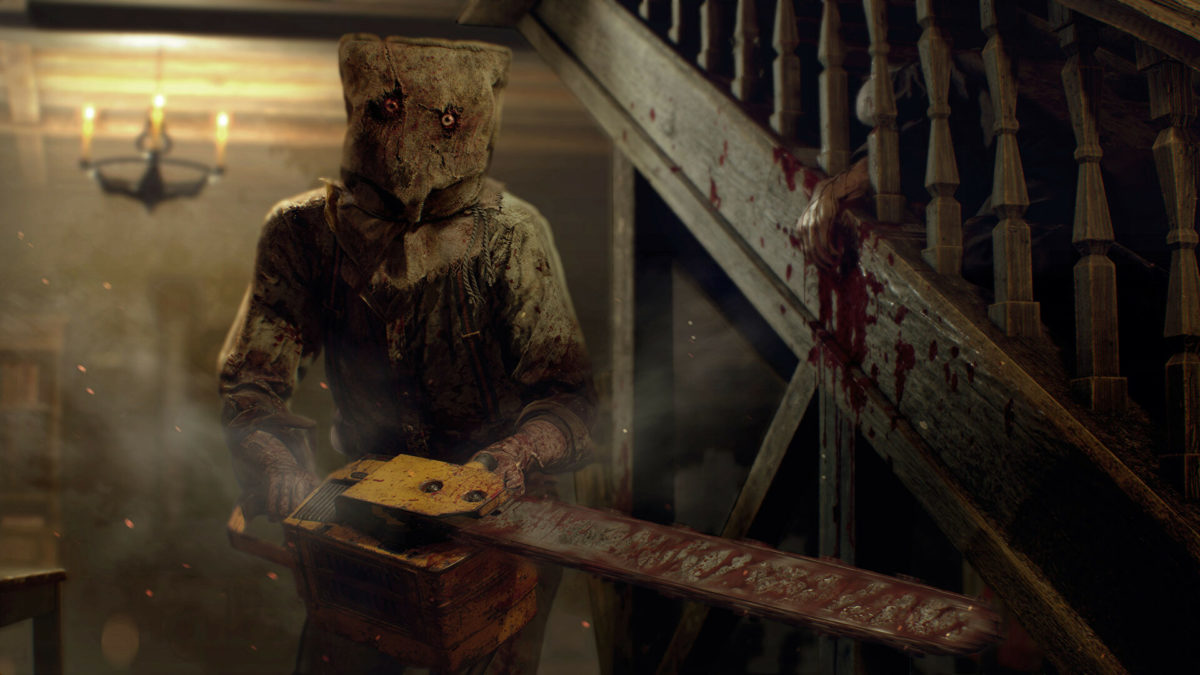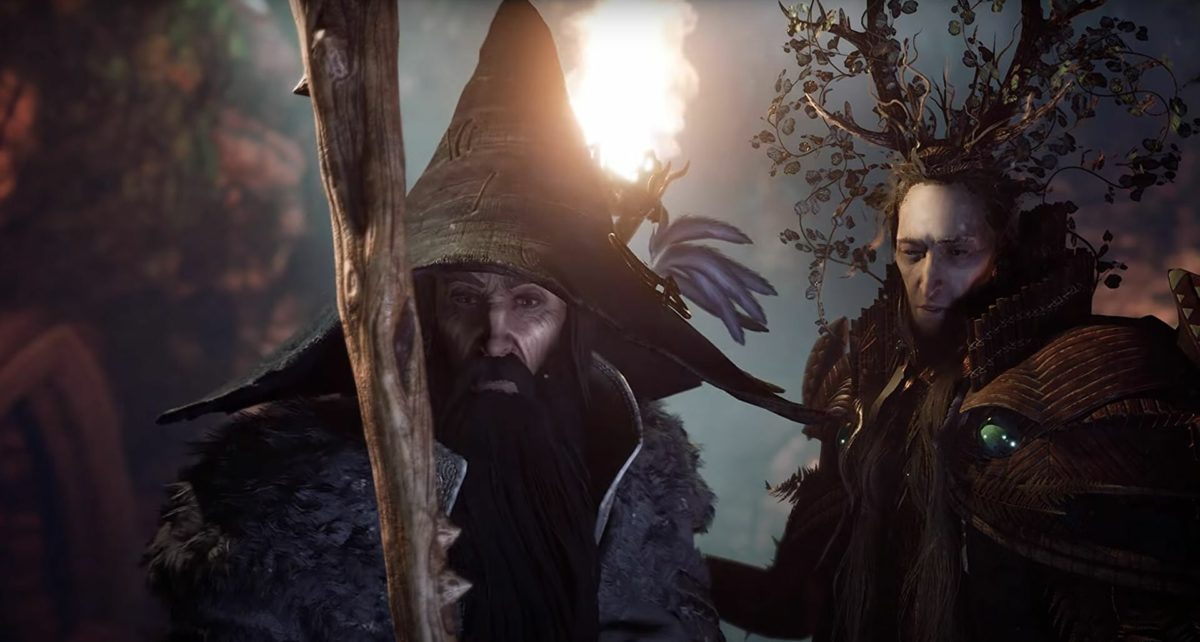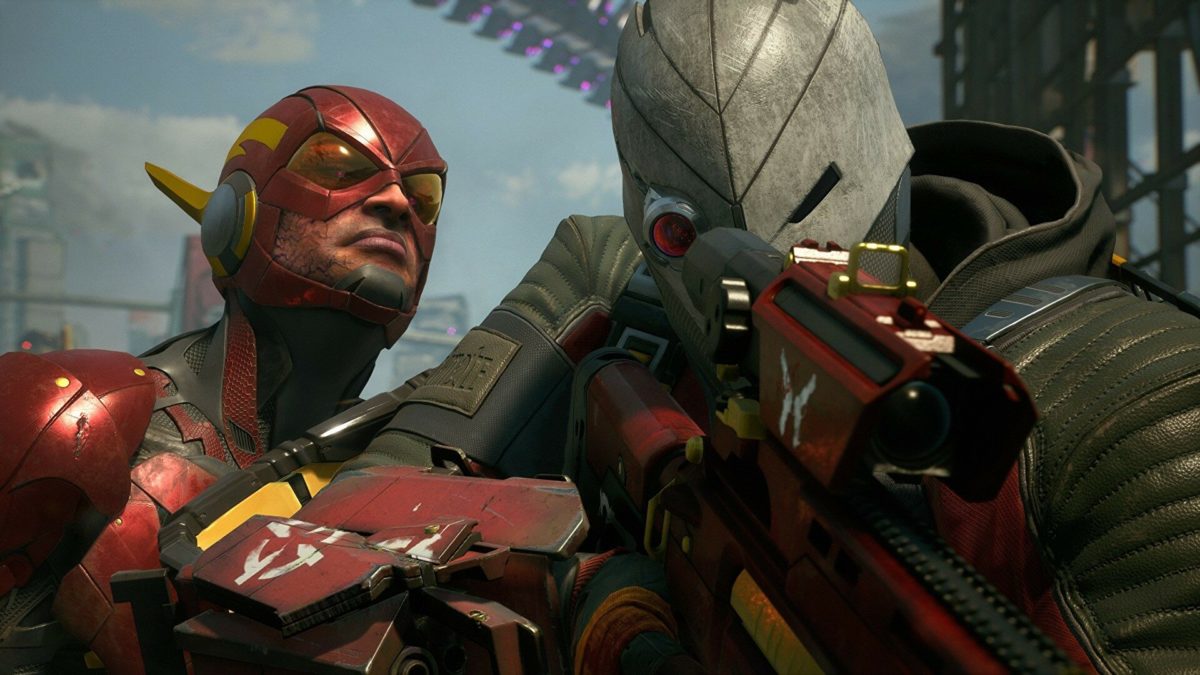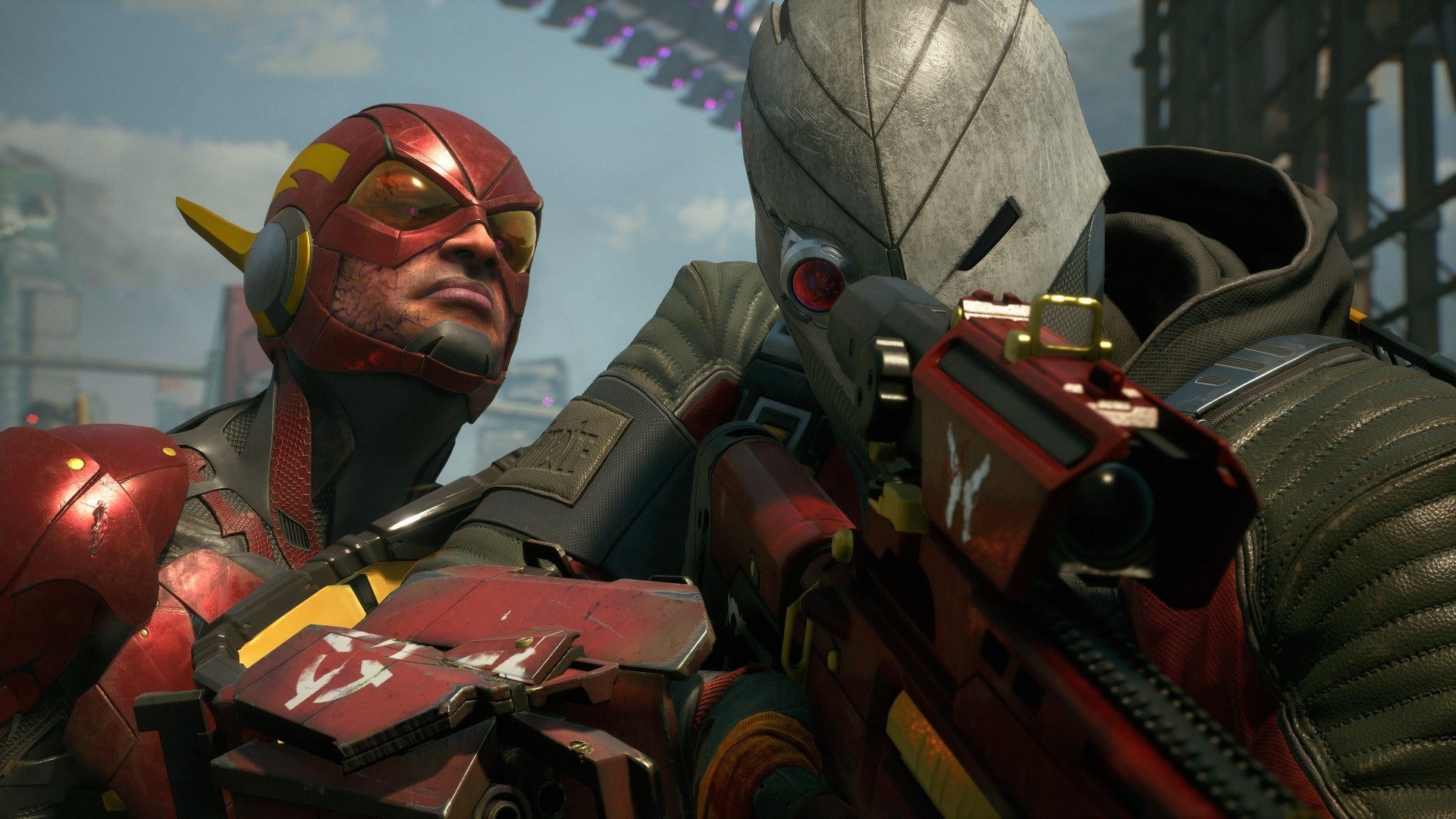A few weeks ago, Devin Reimer was doing a bunch of game testing at VR developer Owlchemy Labs, when one of the developers asked him, in VR, if he would like a donut. He said he did. But instead of reaching out and taking it with his hand, the developer passed Reimer the donut and put it in his mouth. His character ate it.
It’s a simple gesture, one that any of us could do in the real world any time there are donuts around. But in VR, this sort of combination of simplicity and playfulness has been the successful brand of Owlchemy Labs for over 12 years. And it’s a legacy Reimer is deeply proud of as he steps down from the post of “CEOwl” to move into philanthropic work using climate tech to fight the ongoing global climate crisis, leaving his colleague Andrew Eiche as the new “CEOwl” in his stead.
Speaking to me at DICE, the two are ecstatic about the leaps and bounds Owlchemy and VR as a whole have been able to make over the years. Hand tracking technology, for instance, is progressing well, and is a major staple of Owlchemy’s plans for multiplayer play in its upcoming new, untitled VR game. Specifically, they tell me, they want to work on multiplayer play that’s collaborative, not competitive, because they believe it just works that much better in the VR space specifically.
“VR multiplayer in the current state, which is totally great and fine, is a lot like, I lay on my floor and shoot you with a big sniper rifle, or I’m flying around an arena throwing the ball,” Eiche explains. “But people haven’t conceptualized: we’re playing a duet on the piano, the equivalent to that, or we’re writing together on a whiteboard or we’re sculpting together. And we are experimenting with those things.”
Affording Chaos
But with experimentation comes a whole host of technical challenges. The physical space has to be believable not just with one person running around in it and interacting with objects, but multiple. Eiche calls it a “technical nightmare, but worth solving.”
“The things that make console games great are not the things that make VR games great,” he continues. “VR games just tend to work best when you get sand boxing and you get explorative as a core feature and not explorative in the ‘going through a Zelda world’ exploration. But explorative as in, I’m messing with the environment.”
Which is where hand tracking comes in. Eiche tells me that hand tracking is great technology for exploring interactions with worlds that controllers can’t accomplish. A controller can give you a button to pick up an object, and maybe do a single interaction with it, then get rid of it. But what a controller can’t do is what Eiche calls “affordances,” or secondary interactions. Extra stuff that a person might want to do with an object in a world that might be extraneous or even silly. Like clicking a pen.
“Spraying a spray bottle, squeezing a sponge, those are all things that controllers don’t do well because they’re so binary in their state,” he says. “Even with analog controls, it never feels right. But you can do a soft pickup with hand tracking and then squeeze. Eggs were the best. Because you pick up an egg. And then you’re like, ‘Ah, an egg.’ And you squeeze as hard as you can and it crushes and you’re like, ‘Yeah, I did that.’
“We used to say the water bottle on the table is the worst. If you have a water bottle on the table and you reach through it, that disappoints people. So then you pick it up and the next thing is, I should be able to uncap it and then I should be able to drink it. I should be able to pour it. I should be able to…affordances is what we talk about a lot.”
The pair tells me when they playtest, the only time they speak to the playtester is during those moments when the tester tries to do something with an object, nothing happens, and they momentarily look dismayed. Eiche will then ask them what they expected to happen in that moment, and write it down. Often, these are affordances they decide to add later.
But affordances also seem like an infinite rabbit hole of adding features, which seems like it could lead to scope creep quite easily. Eiche says that the team is quite adventuring internally, often supporting developers who preface sentences with “Okay, this is a really bad idea, but…” in whatever harebrained ideas they want to try out. But Eiche also keeps a pretty strict philosophy on cutting content.
“Once you’ve conceptualized the cut, so once you’ve thought about it and you’re like, ‘I think that if we had to cut this we could,’ it’s now your moral obligation to do that cut. Because once you’ve conceptualized it, you’ve already solved the hardest problem. So your game will be better if you just see that through…So developers are a little bit more gun shy to come up to me and be like, ‘I’ve thought of this cut.’ Because I’ll immediately be like, ‘Yes, do it now. Go cut.’ But I’ve never encountered a situation where somebody hasn’t walked through the steps and the game has not been better on the other side…We throw 90% of stuff away. And it’s just, that’s the nature of it.”
Hand tracking isn’t the only other VR tech that Eiche and Reimer are excited about. Face tracking is another big one, because of the level of emotional depth they hope it will allow players to express in virtual spaces, especially cooperatively. And Reimer was thrilled that Sony committed to putting a rumble in the head of its PSVR2 headset, in no small part due to a very specific interaction in Job Simulator.
“In the kitchen there’s a blender and if you turn on the blender and then you stick your face in it down to the blades, there’s haptics in the headsets and the headsets like this,” he holds his hands up to his head and vibrates for a moment. “And it cracks me up so much.”
Eiche adds: “Sony was the only group crazy enough to do it because every time we’d ask another headset manufacturer, they’re like, ‘Are you kidding me? We have trouble enough getting it on the head. Right? We’re not going to shake their face.’”
The Wrong MetaVRse
One technological concept that they’re a little less high on is the metaverse. Reimer likes the word, but says it’s been ruined.
“A lot of people think of the Metaverse as a space where we dump 10,000 people into the same location and they’re doing stuff together,” he says. “And I don’t think that’s going to work.”
Eiche chimes in: “Once a year we go to GDC I’m like, ‘Wow, this is what 10,000 people looks like. And then we’re like, I got to get the fuck out of here.”
Reimer notes that even in a space like a big conference, you don’t hang out with all 10,000 people. You find small groups of friends and spend time with them. That’s closer to what he thinks a “metaverse” might end up being successful at.
“I think they’re always solving the wrong problem,” Eiche continues. “You’re solving the tech problem. And it’s a content problem. And I read a tweet that I just love, which is, ‘It’s easier to create a pen and paper than it is to write Ulysses.’ And over and over again, each metaverse creates a pen and paper…So every time somebody talks about it and they’re like, ‘We’ll have so many users generate this content.’ It’s like you’re making the pen and paper again and hoping that some genius writer shows up and creates the world that you wanted in there. And I mean, Roblox existed for, what, 15 years before it became popular? Anyone thinking about embarking in the Metaverse should look at that and go, holy shit, we have a content problem, not a tech problem.”
Eiche does believe that VR is a likely component of a metaverse idea, and in fact is already a part of it, because it’s already part of an online society. But he doesn’t want VR to be “put in a box.”
“VR can do a lot more than just this thing that you’re trying to shove it into because you read a lot of Neil Stephenson and you think it’s super cool. And it is super cool…But those worlds were also dystopias, right? Ready Player One, they lived in stacks of trailers and everybody went to the Oasis to hide from reality. And then you see people get on stage, they go, we’re building the oasis. And it’s like, are you building both sides of it? Because I don’t like that.”
As Reimer departs, he’s happy with what he’s built and the space he’s helped carve out for Owlchemy in the VR market, especially given that they started at a time when many questioned if VR was about to die for good. Now, there’s no question VR is here to stay, and it’s on Eiche to think about Owlchemy’s place in defining its future. He wants to get the VR industry to move toward the vision Owlchemy has of VR spaces as instinctive, inventive playgrounds that aren’t dependent on current ideas of what a video game should be.
Eiche explains that when games are dependent on controllers, they tend to gravitate toward specific kinds of verbs in their gameplay: shoot, throw, things that are easily mapped to buttons. But with VR, you can bypass all that and conceivably remove most limitations from what a person could do in a virtual space. Why, then, would the VR industry need to keep making video games like the console industry? Why spend investment money on trying to translate another AAA shooter into VR when there are so many other possibilities?
“I think it would be a failure of VR if Job Simulator is still [one of the top VR games] in five years,” Eiche says. “It’s like Wii Sports, right? You need to get past that. We need the industry to move on. Financially we’d love it if we’re in the top 10 forever. But is that healthy for the industry?”
Reimer adds: “Any individual studio, including Owlchemy, is only successful if other studios are also making awesome stuff.”
Rebekah Valentine is a reporter at IGN.


 Resident Evil 4‘s remake launches in just a couple of weeks on March 24th. If even that is too long to wait, you’re now in luck: Capcom just released a demo. It features an early section of the game and no time limit.
Resident Evil 4‘s remake launches in just a couple of weeks on March 24th. If even that is too long to wait, you’re now in luck: Capcom just released a demo. It features an early section of the game and no time limit.










 The Lord Of The Rings: Gollum has been on a long road, which I suppose is fitting given the source material. It now has a story trailer, as of this evening’s Nacon Connect, but the third-person stealth ’em up once again impresses mostly
The Lord Of The Rings: Gollum has been on a long road, which I suppose is fitting given the source material. It now has a story trailer, as of this evening’s Nacon Connect, but the third-person stealth ’em up once again impresses mostly 
 Suicide Squad: Kill The Justice League was recently shown in
Suicide Squad: Kill The Justice League was recently shown in